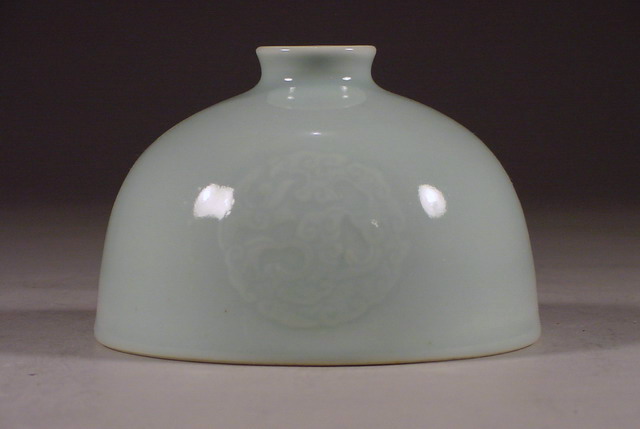
Rare 康熙 Kangxi Beehive (Taibo Zun) Water Pot

|
An extremely rare beehive-shaped water pot, the
form usually has the Chinese name jizhao zun (chicken-coop jar). The shape has also been called taibo zun after the Tang poet, Li Taibo,
as its form bears a resemblance to his wine jar, which accompanies his reclining
figure in popular images. The domed body is finely incised in light
relief with three archaistic dragon roundels (medallions) covered overall in a
pale blue clair de lune (moonlight) glaze of even tone draining
from a white rim. First seen in the 康熙
Kangxi period the clair de
lune glaze is a high fired glaze with a low cobalt content (about 1%). The
Chinese call this hue of blue, tian lan you, 'sky after the rain'. The
underside exhibits the six character kaishu mark and period of the Kangxi
emperor in underglaze blue written in a horizontal position beneath a clear
glaze. |
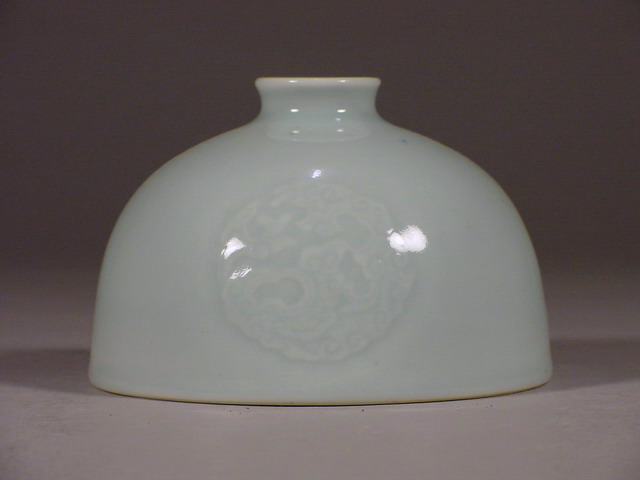
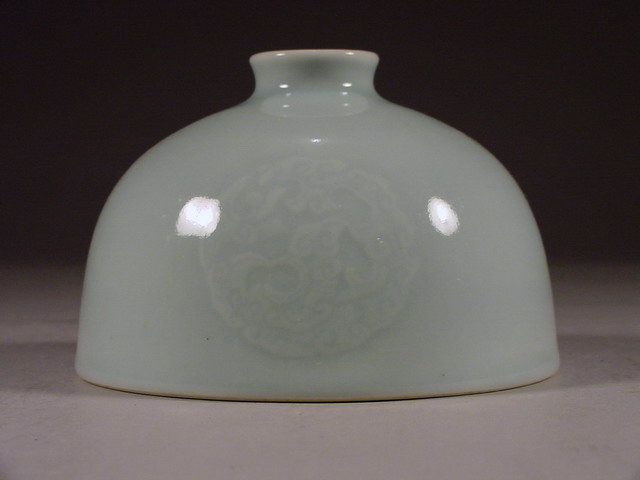
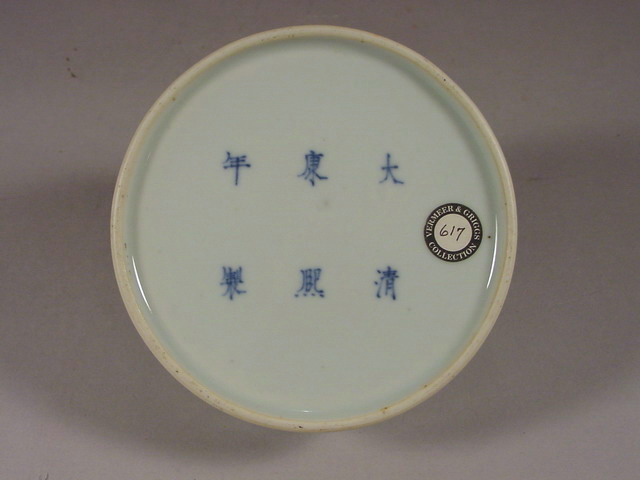
Bottom view showing the foot rim
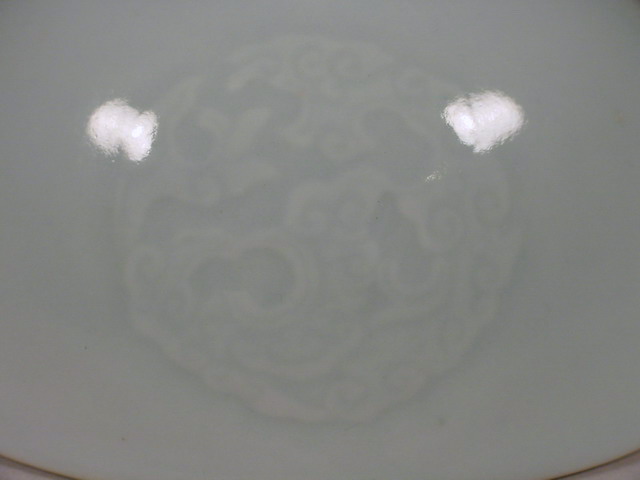
Close-up of the carved archaistic dragon medallion
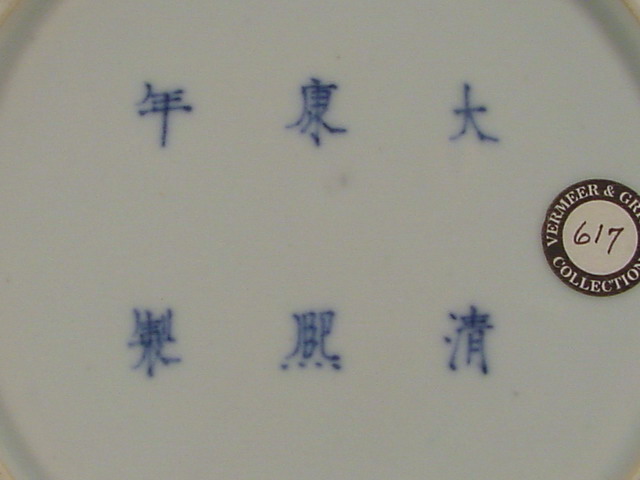
Horizontally written kaishu six character reign mark Da Qing
Kangxi Nian Zhi
Click On Any Image to View Enlargements